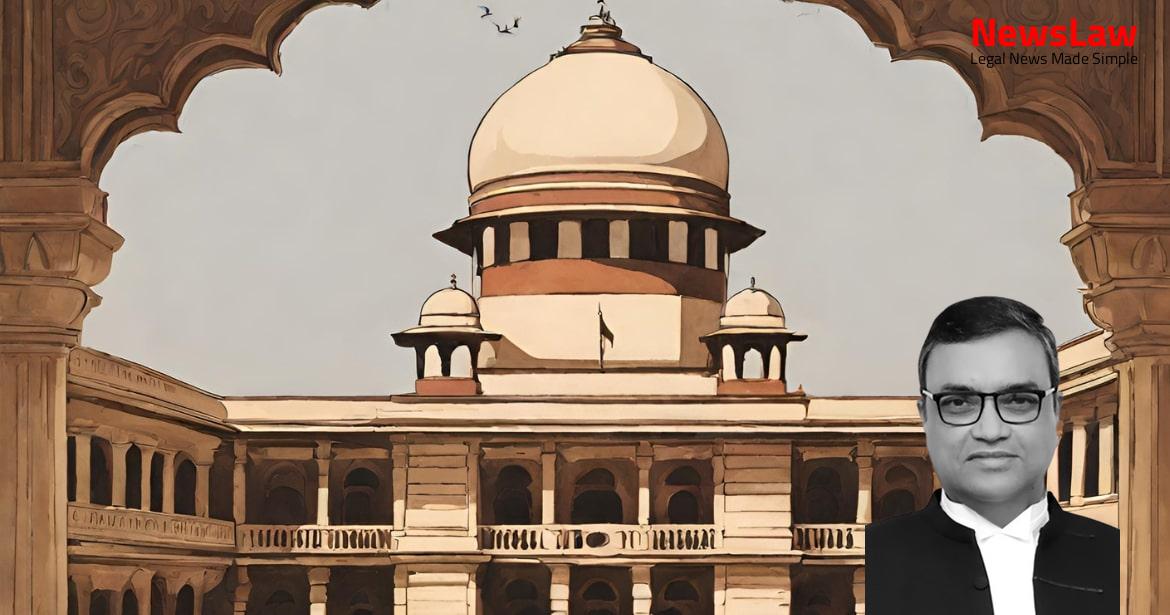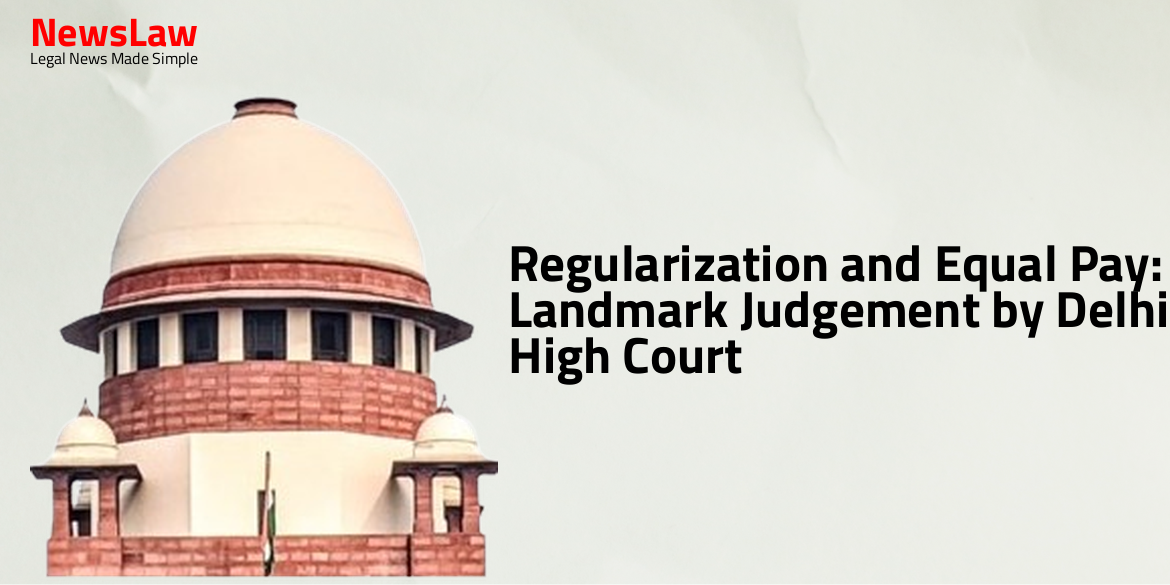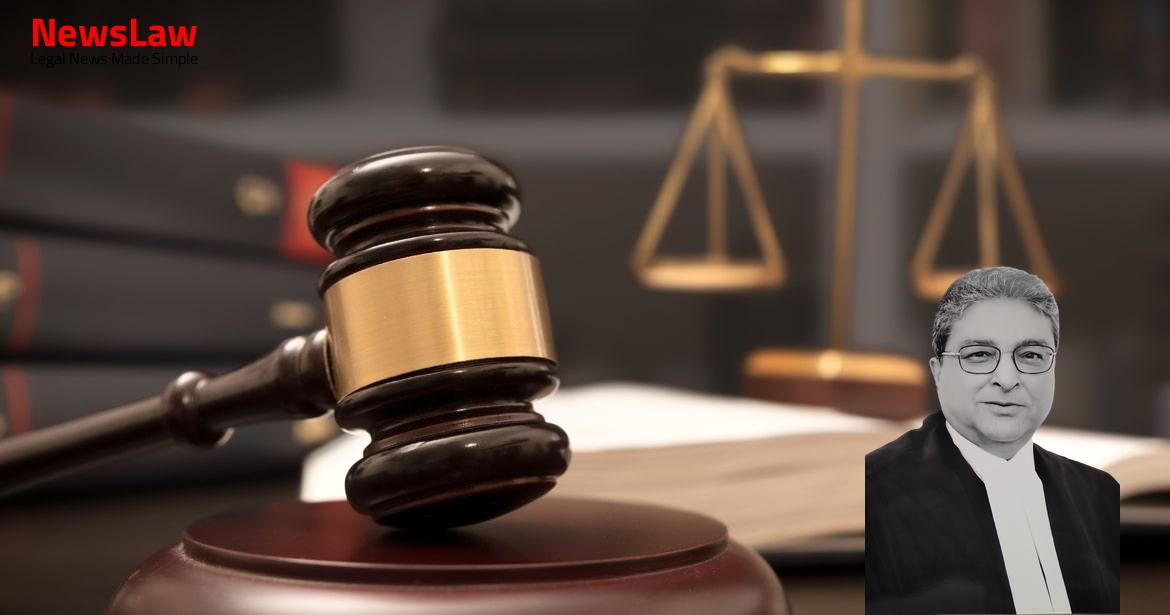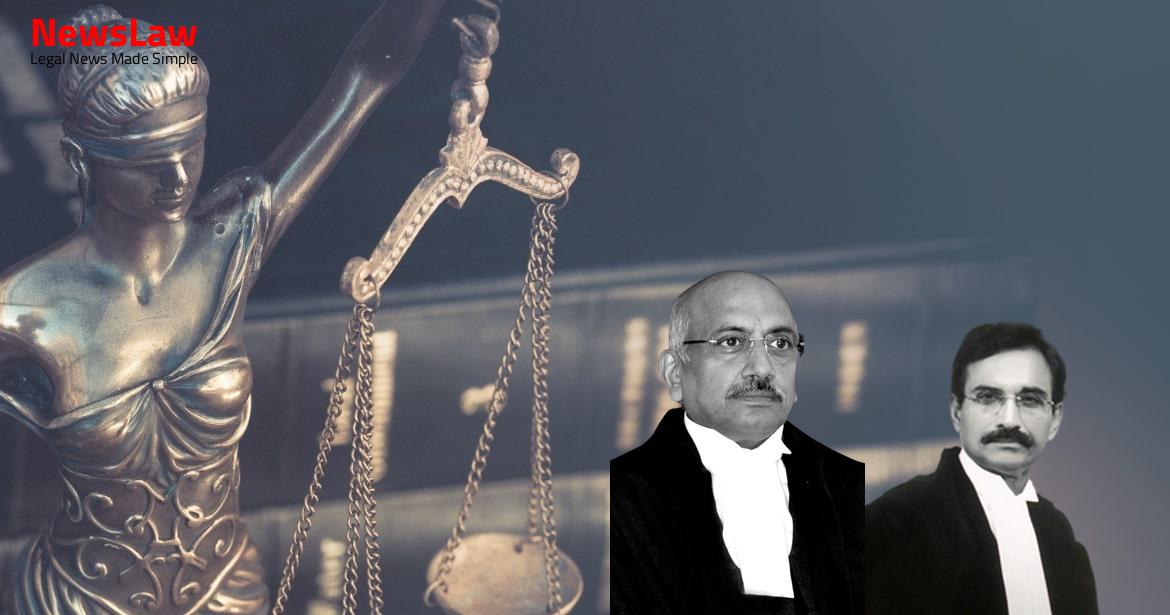In a significant legal development, the Supreme Court of India has issued a ruling on the land title dispute case, specifically focusing on contempt proceedings. The case pertained to a dispute over land ownership rights and failure to comply with court orders. Stay tuned to learn more about the Court’s decision and its implications.
Facts
- Syed Azizulla Husaini challenged the decision in Writ Petition 581/2009.
- A Division Bench modified the order dated 05th March, 2009 to consider objections filed by the appellant along with other affected parties’ objections.
- Multiple decrees and judgments were passed regarding mutation of names in the revenue records.
- The dispute arose due to the failure of authorities to execute the decreed mutation.
- The first respondent filed a Contempt Case due to inaction in mutation by the Tahsildar.
- Various appeals and review petitions were filed by different parties in the High Court.
- The State’s challenge to final decree proceedings was dismissed, leading to unconditional dismissal against the State.
- The Board of Revenue confirmed that the subject land stood escheated to the Government.
- A deed of assignment was executed in favor of the first respondent regarding a portion of the subject land.
- Claims regarding the existence of paigah on the subject land were negatived by the Nazim-e-Atiyat.
- The appellant was directed to effect necessary mutations in revenue records as per the decree.
- The Division Bench (review) set aside the order dated 16 August, 2018, and confirmed the order dated 04 October, 2017, of the Single Judge passed on the writ petition.
- The review petition was allowed based on the discovery of new evidence which was previously unavailable.
- The State’s argument that the petition was barred by limitation was rejected due to the Tahsildar’s failure to obey the court order being deemed a continuing wrong.
- The appellant’s sentence of imprisonment was modified to four months, and a direction was issued to implement the writ petition’s order within four weeks.
- The challenge to the judgement dated 16 August, 2018, through special leave petitions was dismissed by the Court on 29 October, 2018.
Also Read: Pension Entitlement Dispute: Roadways Employees vs. Uttar Pradesh State Road Transport Corporation
Arguments
- The petitioner argued that the Division Bench (review) made an egregious mistake in exercising its review jurisdiction.
- He pointed out that the grounds of review in the petition did not fall within the parameters of the relevant sections of the CPC.
- The petitioner contended that the Division Bench (review) overstepped its jurisdiction, especially after the unsuccessful attempts of the first respondent in previous proceedings.
- Appellant did not approach the Court with clean hands as per learned senior counsels representing the respondents.
- The Government Pleader provided conflicting information during the contempt proceedings regarding the mutation process.
- State’s submission in contempt proceedings contradicted their stance during the review proceedings on the title dispute.
- Appellant inconsistently argued about the title of the land from 1968 to 2022.
- Senior counsel representing the State admitted that no civil suit had been filed regarding the title dispute.
Also Read: Makhan Singh vs. State of Bihar: Upholding Rights Recognized by Consolidation Authorities
Analysis
- The Division Bench (review) exceeded its contempt jurisdiction by considering issues beyond the scope.
- The review petition lacked legitimate grounds necessitating a reversal of the original judgment.
- The Division Bench (review) should have confined itself to the question of limitation for the contempt petition.
- The review should have focused on the maintainability of the contempt petition based on suppression of facts.
- The Division Bench (review) erred in considering the appellant’s compliance rather than the contempt petition’s validity.
- No new evidence brought in the review plea impacted the original finding on the limitation issue.
- The High Court’s decision to allow the contempt petition based on continuing wrong/breach was legally unsound.
- The analysis underscores the importance of adhering to the limitations set by law in contempt proceedings.
- The appellant’s contention that the contempt action was time-barred was supported by the legal framework in place.
- The Division Bench (review) misdirected its focus, resulting in an erroneous decision regarding the contempt petition.
- Section 20 of the Act requires action for contempt to be initiated within one year from the date the contempt is alleged to have been committed.
- Cases like Balkrishna Savalram Pujari v. Shree Dnyaneshwar Maharaj Sansthan discussed the concept of a continuing wrong in the context of limitation.
- Fraud is an extrinsic act that can vitiate court proceedings, and a plea of fraud can be raised even in collateral proceedings.
- Physical presence of a contemnor, especially public officials, should be judiciously mandated to balance public interest and efficiency.
- The review jurisdiction of the court should be narrowly constrained as per Order XLVII of CPC.
- Orders issued by competent courts must be obeyed without reservation, and lack of appeal or review cannot excuse non-compliance.
- Contempt procedures should be initiated and resolved promptly, hence the introduction of a limitation period in Section 20.
- The Act provides for the procedure to address contempt, and any actions for contempt are essentially treated as original proceedings.
- The Act’s provisions should be followed for initiating and handling contempt proceedings, including observing the limitation period in Section 20.
- The limitations period should be scrutinized in each case; exceptions for delay may be allowed in rare circumstances.
- Compliance with court orders is vital for preserving the court’s dignity and effectiveness.
- The jurisdiction to take contempt cognizance and punishment is constitutional and not controlled by other statutes.
- The interpretation of Section 20 should not render the court powerless to punish blatant contempts, even if the offense was concealed for a year through fraud.
- An application for review based on new evidence should demonstrate the material importance of the evidence to the decision being reviewed.
- The court’s contempt jurisdiction is specific, focused on deliberate disobedience, and not for resolving underlying disputes between parties.
- Crafty drafting of petitions to overcome delay for contempt cases should be discouraged, and rules should be framed to regulate contempt proceedings.
- No court can initiate contempt proceedings one year after the alleged contempt was committed.
- The view expressed in Firm Ganpat Ram Rajkumar (supra) is not in disagreement but the decision of the Division Bench (review) affirming that of the Single Judge is unsustainable in law.
- Special facts and circumstances in Firm Ganpat Ram Rajkumar (supra) differ from the present case.
- The decision of the Division Bench (review) affirming that of the Single Judge is wholly unsustainable due to a few other reasons.
- The High Court exceeded both its review and contempt jurisdiction.
- The impugned order was set aside, and the original judgment and order of the Division Bench in the contempt appeal and the letters patent appeal were restored.
- All pending applications were disposed of.
- Parties are to bear their own costs.
- Determination of the title to the subject land, adjudication on the validity of the decrees in favor of the parties, or decision on any other contentious issue are left open for a competent jurisdiction to decide if approached.
- None of the observations made by the Court or the High Court in the impugned order should be considered as an expression of opinion on any factual aspect.
- The appeals were allowed and succeeded.
- These appeals challenge the High Court’s judgment from September 26, 2022, dismissing petitions by the appellant seeking to recall a previous judgment and order.
- A breach was observed as the fact of withdrawal was not brought to the writ court’s notice.
Also Read: Tapas Kumar Das vs. HPCL: LPG Distributorship Location Dispute
Decision
- The judgment and order dated 27 April, 2022 has been set aside
- Civil appeals arising out of SLP (Civil) Nos. 19748-19749 of 2022 have been allowed
- The order of the High Court dated 26 September, 2022 has been deemed no longer valid
- The impugned order has been set aside
- The present appeals have succeeded and are allowed on the same terms as the appeals decided earlier
Case Title: S TIRUPATHI RAO Vs. M LINGAMAIAH (2024 INSC 544)
Case Number: C.A. No.-007920-007921 – 2024



